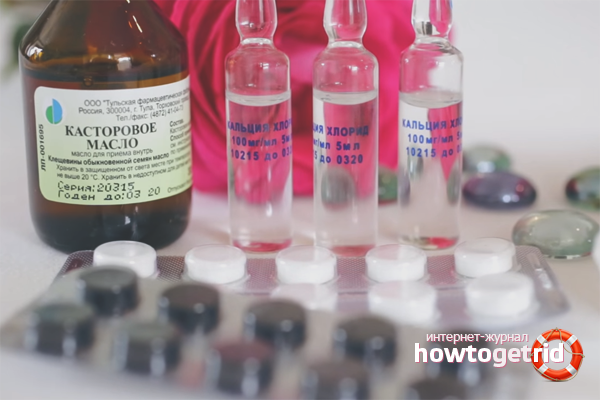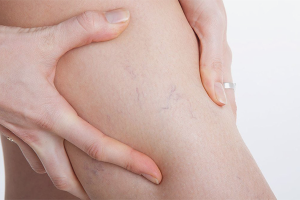The content of the article
Statistics say that one in ten people in the world suffers from a fungal infection on the nails. In medicine, it is called onychomycosis - a disease of the nail plate caused by some fungi and microspores. It is difficult for an unprepared person to distinguish a disease that has begun from normal nail deformation, so it is important to know how the fungus manifests itself and how to get rid of it.
Causes of the appearance of fungus on the nails
A fungus is an infection, so it is easy for them to get infected from another person. Oddly enough, more often people who carefully monitor their health and beauty suffer from the fungus. Baths, pools, manicure and pedicure rooms, beauty salons - the main places of infection. Beach sand is also a danger, in which fungi can live for several months.
Nails on the toes are more likely than on the hands to be infected, this is due to their sweating. Wearing tight shoes made of non-natural materials creates a moist environment between the toes, which microorganisms love so much.
According to statistics, 30% of all infections occur at home. This is facilitated by the use of a shared bath, body towels and manicure accessories.
People suffering from colds and other viral diseases are especially at risk. Their weakened immunity cannot repel fungal infections. Often, infection occurs through wounds or cracks in the skin of the hands and feet.
Signs of fungal nail disease
Onychomycosis can be distinguished from non-fungal cosmetic nail changes by the following criteria.
- Discoloration of the nail. Depending on the type of microorganism that caused the fungus, the nail plate can be painted in white, yellow, gray, brown, blue or even green. In addition, the nail loses its luster and transparency and becomes dull.
- Changing the structure of the nail. Its surface becomes tuberous, exfoliates and moves away from the nail bed. The affected nail may begin to break off in small pieces.
- If you do not start treatment, the skin is affected. The skin between the fingers turns red and itching begins.
- Bad smell. This symptom appears in case of disease progression, in the first stages it may be absent.
- Pain at your fingertips.
The fungus that appears on one nail spreads very quickly to the rest, so treatment should be started at the first signs of the disease. First of all, you need to visit a mycologist or dermatologist. Only he can accurately distinguish the fungus from cosmetic deformation of the nail or the manifestation of an allergic reaction. The doctor will take a scraping from the affected area and, after conducting a series of studies, will identify what microorganisms caused the disease.
How to get rid of toenail fungus
Home remedies for the treatment of onychomycosis should be used in conjunction with medications prescribed by a doctor. It is in this case that one can count on a complete and quick disposal of the disease.
Most often, traditional medicine recommends treating an ailment with Kombucha. A small piece of mushroom should be put on a sore nail and the skin around. Wrap finger in cellophane and secure with a bandage. Such a compress is done overnight for 4 weeks. You can’t use one piece of mushroom for several days. To improve the effect, a non-hot foot bath can be made before the procedure.
At home, you can make vinegar ointment.To do this, put the raw egg in a small jar and pour it with vinegar. Store the container in a dark place until the egg is completely dissolved. After that, mix the ointment well and apply to the nail plates in the morning and in the evening. For prevention, it can also handle healthy nails.
Another effective but painful method of combating fungus is iodine. Under short-cropped nails, iodine should be instilled until it is no longer absorbed. After that, lower the legs into a basin with warm water. This procedure needs to be done 4 times, but do not do it more often than 1 time per week.
To relieve skin irritation, lavender oil and tea tree oil are suitable. Essential oils help fight infection and have anti-inflammatory effects. The main thing is to choose real oil, and not its cheap analogues.
How to get rid of fungus on nails
To get rid of the disease on the nails of the hands, you can use the same means as for the legs. In addition, coffee will help in the fight against fungus. To do this, you need to brew strong coffee, wait until it cools down a little, and lower your fingers into it for 5 minutes. You can’t shake the thick from the bottom. The procedure can be repeated every day.
Compresses with tar soap also help from the fungus. A sick nail is well soaped and bandaged. Such a compress is kept all night.
Twice a week, you can make soap and soda baths for hands. For 3 liters of water, add 1 tablespoon of soda and 50 grams of antibacterial soap. For an anti-inflammatory effect, add sage, string or chamomile. Hands are dipped in water for 20 minutes, and then the nails are cut with scissors or nippers. Remember that when infecting one nail, it is necessary to use separate manicure tools for it, so that harmful microorganisms do not affect healthy nails.
Drugs for fungus on the nails
Now on the shelves of pharmacies you can find many means to combat fungus. But remember that all medications for treatment must be used exclusively as directed by the doctor. Only in a medical laboratory can you determine which microorganisms were the causative agent of the disease. Depending on this, the doctor prescribes a drug that effectively fights a specific type of fungus.
The treatment depends entirely on the degree of damage to the nail plate. If the disease is at an initial stage, and the nail is slightly affected, local remedies can cope with it. These include ointments, creams or solutions applied to the affected area. The most famous of them: Exoderil, Nizoral, Mikospor. To prepare the nails for applying the ointment, you need to make a bath with soap and soda.
Another topical remedy is special varnishes (Batrafen, Luceril). They are treated for 3 to 8 months until a healthy nail is fully grown. Decorative varnish can be applied to medical varnish.
If the disease progresses, a course of antimycotics (drugs to fight the fungus) is needed. Diflucan, Lamisil, Ketonazole are used to treat onychomycosis. These drugs have a number of contraindications, for example, liver and kidney diseases, the use of oral contraceptives, pregnancy, breastfeeding, etc. Tablets can be combined with ointments and varnishes.
If the nail plate is already completely affected, the doctor will prescribe a special tool to remove it. As a rule, it is an ointment that is applied in a thick layer to the affected nail. After this, the phalanx of the finger is sealed with a plaster for 3-5 days. After this time, the affected nail is removed painlessly.
In addition, the doctor may advise a disinfectant solution, which is prepared in a pharmacy. They need to handle all shoes and clothing in contact with sore nails (socks and gloves). Shoes are wiped from the inside with a cotton swab dipped in a solution.Socks and gloves for processing are placed in a plastic bag along with cotton wool soaked in a solution. The bag is tightly tied and left overnight. During the treatment of the fungus, such disinfection should be carried out 1 time per month.
Preventive measures
Prevention of nail fungus is worth both people who have never encountered this trouble, and have undergone a course of treatment. Basic prevention rules include.
- Do not walk barefoot in public. This is especially true for places where humidity is increased (bath, pool, beach). If you can’t protect yourself from walking barefoot, buy a special spray in the pharmacy that protects against fungus and treat your feet with it.
- Visit only proven beauty parlors or take your manicure and pedicure sets from home.
- Do not try other people's shoes or shoes in the store on your bare foot, always use your sock or sled.
- If someone from your home becomes infected with a fungus, provide it with a separate towel and manicure devices. Wash the bath thoroughly after visiting it.
- Choose to wear loose shoes made from natural materials. If your feet are prone to sweating, sneakers and sneakers are contraindicated in the summer.
- Do not forget about foot and hand hygiene. After visiting the bath or pool, wipe them thoroughly, paying particular attention to the spaces between the fingers. Use only your personal towel.
After the successful completion of the treatment of the fungus, it is necessary to carry out a set of preventive measures to prevent re-infection. Firstly, antibacterial treatment of shoes, socks, tights, gloves is necessary. For this, you can use pharmacy or 25% acetic acid. Bed linen and towels should be washed and ironed carefully. Manicure devices for disinfection are dipped in alcohol for several minutes, and then calcined over a fire. Home slippers are best replaced with new ones.
Well-groomed and beautiful nails are not only an occasion for female pride, but also a sign of men's health. Even with a slight modification of the nail, do not hesitate to consult a doctor. Pay attention to personal hygiene and nail care, then no fungus will bother you.
Video: how to quickly cure nail fungus











Submit